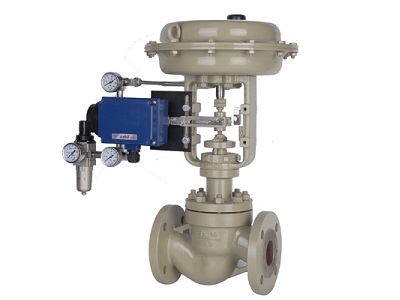Pneumatic membrane single-seat control valve can be divided into 5 aspects, namely according to use and function, medium working temperature, pressure, special purpose and according to principle, function and structure. Pneumatic control valve is to use compressed gas as the power source, the cylinder as the actuator, and with the help of valve positioner, converter, solenoid valve, position retention valve, gas storage tank, gas filter and other accessories to drive the valve, realize the switching value Or proportional adjustment, receiving the control signal of the industrial automation control system to complete the adjustment of the pipeline medium: flow, pressure, temperature, liquid level and other process parameters. Pneumatic control valve is characterized by simple control, fast response, and intrinsic safety, without the need for additional explosion-proof measures.

Types of Pneumatic Diaphragm Single Seat Control Valves
After years of development, my country's pneumatic diaphragm single-seat control valve has a very good foundation and heritage. As the use of such products has been affirmed and appreciated by more and more users, the development of pneumatic diaphragm single-seat control valves has also received more support. Accelerate the further improvement of the pneumatic diaphragm single-seat control valve, and the most important thing is to further expand the types of pneumatic diaphragm single-seat control valves.
So what are the types of pneumatic diaphragm single-seat control valves in my country at present? What are the types of pneumatic diaphragm single-seat control valves based on?
Types of Pneumatic Diaphragm Single Seat Control Valves
1. According to the purpose and function
(1) two-position valve; (2) regulating valve; (3) diverter valve; (4) shut-off valve;
2. Classification according to the working temperature of the medium
(1) High temperature valve; (2) Medium temperature valve; (3) Normal temperature valve; (4) Low temperature valve;
3. Classification by pressure
(1) vacuum valve; (2) low pressure valve; (3) medium pressure valve; (4) high pressure valve; (5) ultra-high pressure valve;
4. Commonly used classification method This classification method
It is divided according to principle, function and structure. It is the most commonly used classification method at home and abroad. Generally divided into nine categories:
(1) Single-seat control valve; (2) Double-seat control valve; (3) Sleeve control valve; (4) Angle control valve; (5) Three-way control valve; (6) Diaphragm valve; (7) Butterfly valve; (8) Ball valve; (9) Eccentric rotary valve;
5. Special purpose
(1) Soft sealing shut-off valve; (2) Hard sealing shut-off valve; (3) Wear-resistant regulating valve; (4) Corrosion-resistant regulating valve; (5) PTFE corrosion-resistant regulating valve (6) Full corrosion-resistant alloy regulating valve valve;
(7) Emergency action shut-off or vent valve; (8) Anti-blocking regulating valve; (9) Anti-corrosion and anti-blocking shut-off valve; (10) Insulation jacket valve; (11) Large pressure drop shut-off valve; (12) Small flow rate regulating valve;
(13) Large diameter regulating valve; (14) Large adjustable ratio regulating valve; (15) Low S energy-saving regulating valve; (16) Low noise valve; (17) Fine and small regulating valve;
(18) lining (rubber, tetrafluoro, ceramic) regulating valve; (19) special ball valve for water treatment; (20) special valve for caustic soda;
 WENZHOU WEITUO VALVE CO., LTD.
WENZHOU WEITUO VALVE CO., LTD.